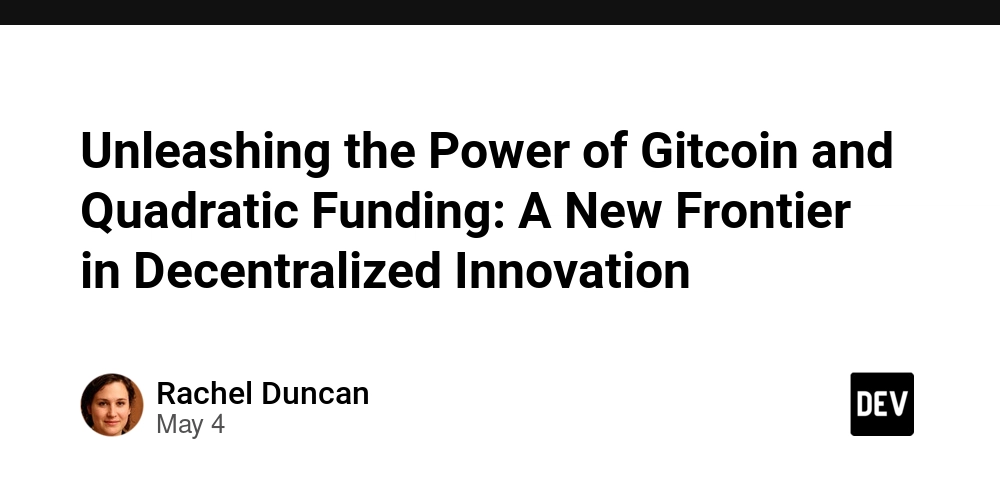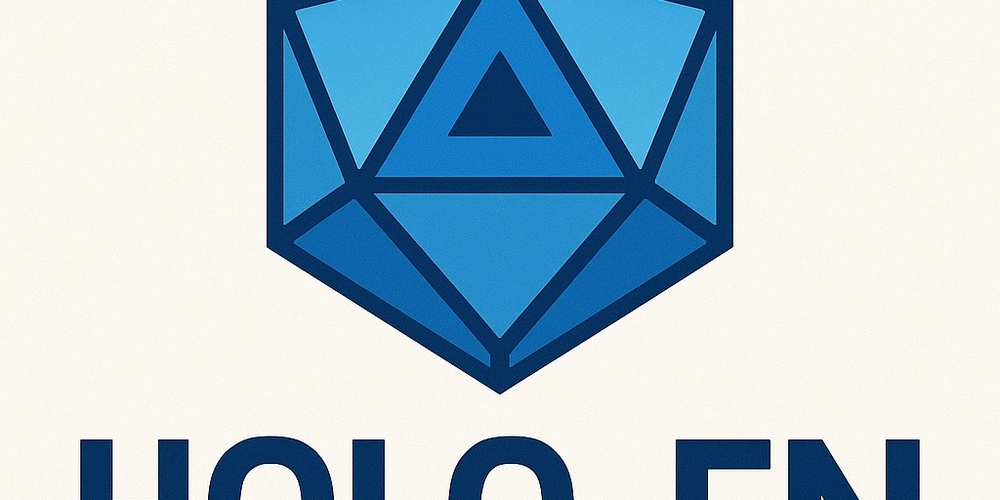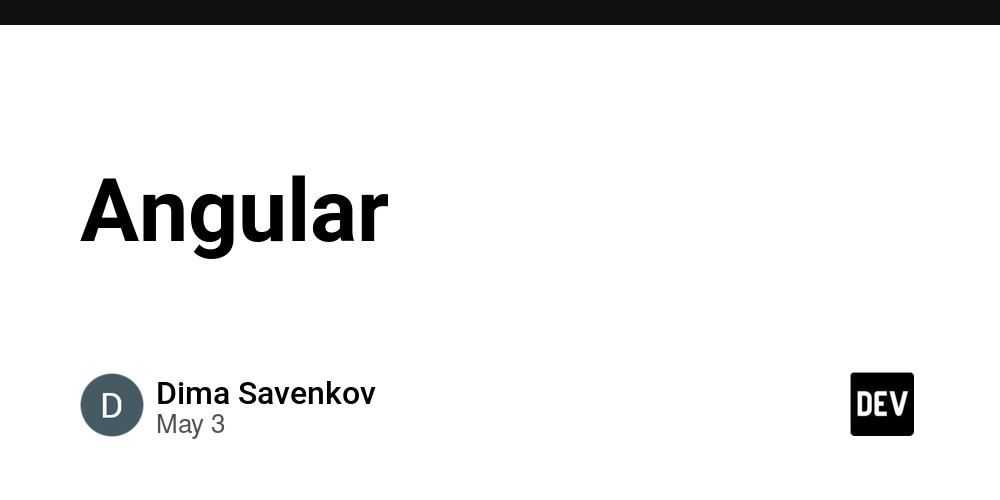The Emergence and Impact of Gitcoin Token (GTC) in the Web3 Ecosystem
Abstract The Gitcoin Token (GTC) stands at the intersection of blockchain innovation and community-driven governance. In this post, we explore the genesis of GTC, its role as a governance and incentive tool within the Gitcoin ecosystem, and its broader implications for the Web3 and open-source communities. We discuss background and context, core features such as decentralized governance and quadratic funding, practical applications, challenges, and the promising future outlook of GTC. We also highlight related projects and links from authoritative sources, ensuring that both technical experts and newcomers gain a clear perspective on how GTC is reshaping the digital landscape. Introduction The rise of blockchain technologies has transformed how communities organize, collaborate, and fund open-source projects. At the forefront of this digital revolution is the Gitcoin Token (GTC), initially launched as a governance token to empower developers and ensure sustainable incentive structures in the open-source space. In simpler terms, GTC is designed not just for financial transactions but to offer users a voice in decisions that shape the future of decentralized projects. This post provides an in-depth analysis of GTC, its origins, unique features, and its significance across the Web3 ecosystem. Background and Context Gitcoin emerged with a clear vision: to fund open-source projects and reward developers fairly. With web3 innovation rapidly developing, a decentralized model has become essential for sustaining growth and transparency. GTC was introduced in May 2021 as a part of Gitcoin’s broader initiative to empower developers and foster a collaborative environment. Understanding the role of blockchain in this environment is key. For those new to blockchain, you can learn more about its fundamentals through this What is Blockchain? article. Gitcoin’s platform connects developers with projects in need of decentralized solutions, creating a vibrant community that values transparency and innovation. By integrating incentive mechanisms like GTC, the platform promotes continuous technological advancements that benefit not only developers but also the businesses and end-users engaged in the broader digital ecosystem. Key Milestones in GTC’s History Below is a brief timeline summarizing some of the key events related to the emergence of GTC: May 2021: GTC is introduced as a governance token. Development of Governance Mechanisms: Emphasis placed on community involvement in decision-making. Expansion of Quadratic Funding: A unique model that ensures small contributions are valued and recognized, reshaping funding models within decentralized projects. Integration with Web3 Applications: GTC finds utility across multiple decentralized platforms beyond its original framework. Core Concepts and Features GTC is unique for multiple reasons. Here are some of its core features and how they operate within the Gitcoin ecosystem: 1. Decentralized Governance GTC empowers token holders with voting rights through a decentralized autonomous organization (DAO). This gives developers, users, and investors a direct influence on strategic decisions. For additional details, read more about Gitcoin Governance. Key Points: Democratic Model: Each holder participates in shaping the project's future. Transparency: Open voting and discussions help prevent centralized control. Community Empowerment: Decisions reflect the interests of a globally dispersed community. 2. Quadratic Funding One of the most notable innovations on the Gitcoin platform is its use of quadratic funding. This model amplifies the contributions of many, rather than a handful of large donors, ensuring that projects which resonate with a wide community receive appropriate support. For an in-depth explanation, visit Gitcoin Quadratic Funding. Table 1: Comparison Between Traditional Funding and Quadratic Funding Aspect Traditional Funding Quadratic Funding Contribution Dynamics Often favors a few large donors Values multiple small contributions Community Representation Can be skewed toward wealthy investors Provides a more accurate reflection of community interest Decision-making Centralized decision processes Decentralized, with each contributor having a measurable impact 3. Incentivizing Developers Gitcoin Token not only serves as a governance tool but also plays a key role in incentivizing developers to contribute to open-source projects. By rewarding contributions with GTC, Gitcoin encourages broader participation and innovation. This mechanism is fundamental to open-source sustainability, as discussed in Sustainability of Open Source Through Tokenization. 4. Integration with Decentralized Applications GTC’s utility is expanding beyond Gitcoin. Its integration with various blockchain platforms and decentralized applications (dApps) underscore

Abstract
The Gitcoin Token (GTC) stands at the intersection of blockchain innovation and community-driven governance. In this post, we explore the genesis of GTC, its role as a governance and incentive tool within the Gitcoin ecosystem, and its broader implications for the Web3 and open-source communities. We discuss background and context, core features such as decentralized governance and quadratic funding, practical applications, challenges, and the promising future outlook of GTC. We also highlight related projects and links from authoritative sources, ensuring that both technical experts and newcomers gain a clear perspective on how GTC is reshaping the digital landscape.
Introduction
The rise of blockchain technologies has transformed how communities organize, collaborate, and fund open-source projects. At the forefront of this digital revolution is the Gitcoin Token (GTC), initially launched as a governance token to empower developers and ensure sustainable incentive structures in the open-source space. In simpler terms, GTC is designed not just for financial transactions but to offer users a voice in decisions that shape the future of decentralized projects. This post provides an in-depth analysis of GTC, its origins, unique features, and its significance across the Web3 ecosystem.
Background and Context
Gitcoin emerged with a clear vision: to fund open-source projects and reward developers fairly. With web3 innovation rapidly developing, a decentralized model has become essential for sustaining growth and transparency. GTC was introduced in May 2021 as a part of Gitcoin’s broader initiative to empower developers and foster a collaborative environment. Understanding the role of blockchain in this environment is key. For those new to blockchain, you can learn more about its fundamentals through this What is Blockchain? article.
Gitcoin’s platform connects developers with projects in need of decentralized solutions, creating a vibrant community that values transparency and innovation. By integrating incentive mechanisms like GTC, the platform promotes continuous technological advancements that benefit not only developers but also the businesses and end-users engaged in the broader digital ecosystem.
Key Milestones in GTC’s History
Below is a brief timeline summarizing some of the key events related to the emergence of GTC:
- May 2021: GTC is introduced as a governance token.
- Development of Governance Mechanisms: Emphasis placed on community involvement in decision-making.
- Expansion of Quadratic Funding: A unique model that ensures small contributions are valued and recognized, reshaping funding models within decentralized projects.
- Integration with Web3 Applications: GTC finds utility across multiple decentralized platforms beyond its original framework.
Core Concepts and Features
GTC is unique for multiple reasons. Here are some of its core features and how they operate within the Gitcoin ecosystem:
1. Decentralized Governance
GTC empowers token holders with voting rights through a decentralized autonomous organization (DAO). This gives developers, users, and investors a direct influence on strategic decisions. For additional details, read more about Gitcoin Governance.
Key Points:
- Democratic Model: Each holder participates in shaping the project's future.
- Transparency: Open voting and discussions help prevent centralized control.
- Community Empowerment: Decisions reflect the interests of a globally dispersed community.
2. Quadratic Funding
One of the most notable innovations on the Gitcoin platform is its use of quadratic funding. This model amplifies the contributions of many, rather than a handful of large donors, ensuring that projects which resonate with a wide community receive appropriate support. For an in-depth explanation, visit Gitcoin Quadratic Funding.
Table 1: Comparison Between Traditional Funding and Quadratic Funding
| Aspect | Traditional Funding | Quadratic Funding |
|---|---|---|
| Contribution Dynamics | Often favors a few large donors | Values multiple small contributions |
| Community Representation | Can be skewed toward wealthy investors | Provides a more accurate reflection of community interest |
| Decision-making | Centralized decision processes | Decentralized, with each contributor having a measurable impact |
3. Incentivizing Developers
Gitcoin Token not only serves as a governance tool but also plays a key role in incentivizing developers to contribute to open-source projects. By rewarding contributions with GTC, Gitcoin encourages broader participation and innovation. This mechanism is fundamental to open-source sustainability, as discussed in Sustainability of Open Source Through Tokenization.
4. Integration with Decentralized Applications
GTC’s utility is expanding beyond Gitcoin. Its integration with various blockchain platforms and decentralized applications (dApps) underscores its potential to become a cornerstone in the Web3 ecosystem. Moreover, its compatibility with evolving technological standards ensures it remains relevant as the ecosystem matures.
Bullet List: Key Benefits of GTC
- Decentralized Participation: Empowers community members through voting rights.
- Transparent Funding: Quadratic funding ensures fair resource allocation.
- Enhanced Developer Rewards: Provides necessary incentives for continuous innovation.
- Scalability: Designed to work across multiple decentralized platforms.
Applications and Use Cases
The integration and application of GTC extend well beyond a single project. Here are a few practical examples:
1. Open-Source Project Funding
Developers working on open-source projects can receive rewards in GTC. For instance:
- Gitcoin Grants: Developers submit proposals and receive funding via quadratic allocation.
- Crowdsourcing Resource Allocation: By using community votes, projects obtain funds that align with the preferences of a distributed user base.
This approach creates a sustainable model for funding software development, which contrasts sharply with traditional methods that may depend on venture capital or centralized funding.
2. Decentralized Governance for dApps
Many dApps embrace decentralized governance by integrating GTC or similar tokens. For example:
- Community Decision-making: Projects use token-weighted voting mechanisms, similar to Gitcoin’s model, to evolve and upgrade their platforms.
- Iterative Development: Regular proposals and community votes on smart contract changes drive the project’s evolution.
3. Cross-platform Collaborations
GTC’s design allows it to be integrated into various decentralized networks. Its utility can be expanded to:
- Interoperability Projects: Enhancing collaboration between blockchains for a smoother cross-chain experience.
- Developer Ecosystems: Acting as a common incentive token across multiple platforms, thereby attracting a larger pool of contributors.
Dev.to Links for Further Exploration
For those looking to dive deeper, consider these insightful Dev.to posts:
- License Token: A New Paradigm for OSS Sustainability
- Arbitrum One vs Arbitrum Nova: Comparative Analysis and Future Insights
- Arbitrum and Community Governance: Pioneering Decentralized Decision Making
Challenges and Limitations
While GTC shows immense promise, there are challenges and limitations that the ecosystem must address:
1. User Adoption and Critical Mass
For any governance token to be effective, widespread adoption is crucial. Without a critical mass of active users, the platform may struggle to maintain a vibrant and functional governance ecosystem. Strategies must be implemented to boost onboarding and ensure active participation.
2. Market Volatility
Like other cryptocurrencies, GTC is subject to price fluctuations. These fluctuations may affect the token’s incentive value and the overall trust of developers and investors. Mitigation strategies include stabilizing mechanisms and diversified incentive models.
3. Governance Vulnerabilities
Decentralized governance can sometimes lead to challenges such as:
- Minority Rule Risks: A small group of highly concentrated token holders might exert undue influence.
- Informed Participation: Ensuring that all contributors have the necessary knowledge to vote on complex issues is a continuous challenge.
4. Regulatory Considerations
As blockchain projects continue to evolve, they must navigate a complex landscape of regulatory compliance. Clear guidelines and proactive engagement with regulators are essential to avoid legal pitfalls.
Future Outlook and Innovations
Looking forward, several trends and innovations are poised to enhance the impact of GTC and similar governance tokens:
Scalability and Platform Expansion
As the user base grows, ensuring the scalability of the infrastructure is paramount. Future developments may include:
- Layer 2 Solutions: Enhancements such as rollups could reduce transaction fees and increase throughput.
- Integration with Other Blockchains: Tools to facilitate cross-chain compatibility will further extend GTC’s utility.
Enhanced Educational Initiatives
For informed decision-making in decentralized governance, education is key. Gitcoin and similar platforms may invest further in:
- Workshops and Webinars: To guide users in making informed voting decisions.
- Interactive Tutorials and Documentation: These resources help demystify complex blockchain concepts.
Interoperability and Collaboration
The future of the Web3 ecosystem lies in seamless interoperability. GTC could be integrated into a wider array of decentralized platforms, facilitating collaborative innovation across different networks. For additional insights, read more on Blockchain for Open Source Funding.
Evolving Incentive Models
As the digital economy evolves, new incentive structures are expected to emerge. Projects might explore:
- Hybrid Token Models: Combining governance, utility, and reward functionalities into one comprehensive token system.
- Dynamic Reward Systems: That adjust based on project performance and community engagement.
Table 2: Future Innovations Roadmap
| Innovation | Description | Potential Benefits |
|---|---|---|
| Layer 2 Integration | Adoption of rollups and sidechains to improve scalability and reduce fees | Faster transactions, lower fees |
| Cross-chain Adaptability | Enhanced interoperability with other blockchain platforms | Expanded user base and versatility |
| Hybrid Token Models | Combining governance, utility, and rewards within a single token structure | More comprehensive incentive mechanisms |
| Educational Initiatives | Workshops, interactive tutorials, and detailed documentation to empower community members | Better-informed decisions and governance |
Summary
Gitcoin Token (GTC) is more than just a cryptocurrency—it is a building block for sustainable, decentralized innovation. By harnessing the power of blockchain, Gitcoin has created an ecosystem where open-source developers are valued and funded fairly through transparent, democratic processes. Key features such as decentralized governance, quadratic funding, and a vibrant community reward model differentiate GTC from traditional funding mechanisms.
While challenges such as market volatility, regulatory uncertainties, and the need for critical mass remain, the future outlook for GTC is promising. With ongoing innovations in scalability, interoperability, and enhanced educational initiatives, GTC is well-positioned to lead the transformation towards a more equitable and collaborative digital ecosystem.
For further reading and additional insights into similar projects and future trends, you may also explore:
- Arbitrum and Community Governance
- Arbitrum Airdrop
- Arbitrum and Network Upgrades
- Arbitrum and Open Source Contributions
Additionally, a number of insightful Dev.to posts provide complementary perspectives on open source funding and governance models. Their analyses reinforce the value of GTC as a catalyst for innovation in the Web3 era.
Conclusion
The emergence of Gitcoin Token (GTC) marks a new shift in how we approach funding and governance in the open-source world. By using blockchain technology, innovative funding models like quadratic funding, and decentralized decision-making, GTC is creating a more inclusive and democratic ecosystem for development. As Web3 continues to challenge traditional financial and governance systems, tokens like GTC will enable communities to take control, promote sustainability, and drive technological progress.
Gitcoin’s innovative approach ensures that developers not only receive fair compensation but also actively participate in shaping the future of their projects. With further advancements in interoperability, education, and scalability, GTC’s impact is set to grow wider and deeper. This posts’ discussion of background, core features, applications, and challenges provides a holistic view of how governance tokens can transform the open-source and decentralized landscape.
In summary, GTC and its underlying principles offer a glimpse into a future where every participant in the blockchain ecosystem plays an essential role in decision-making, innovation, and sustainability. As more projects adopt similar models, the collective power of decentralized communities will likely reshape traditional financial and technological paradigms, paving the way for a more transparent and equitable digital era.






































































